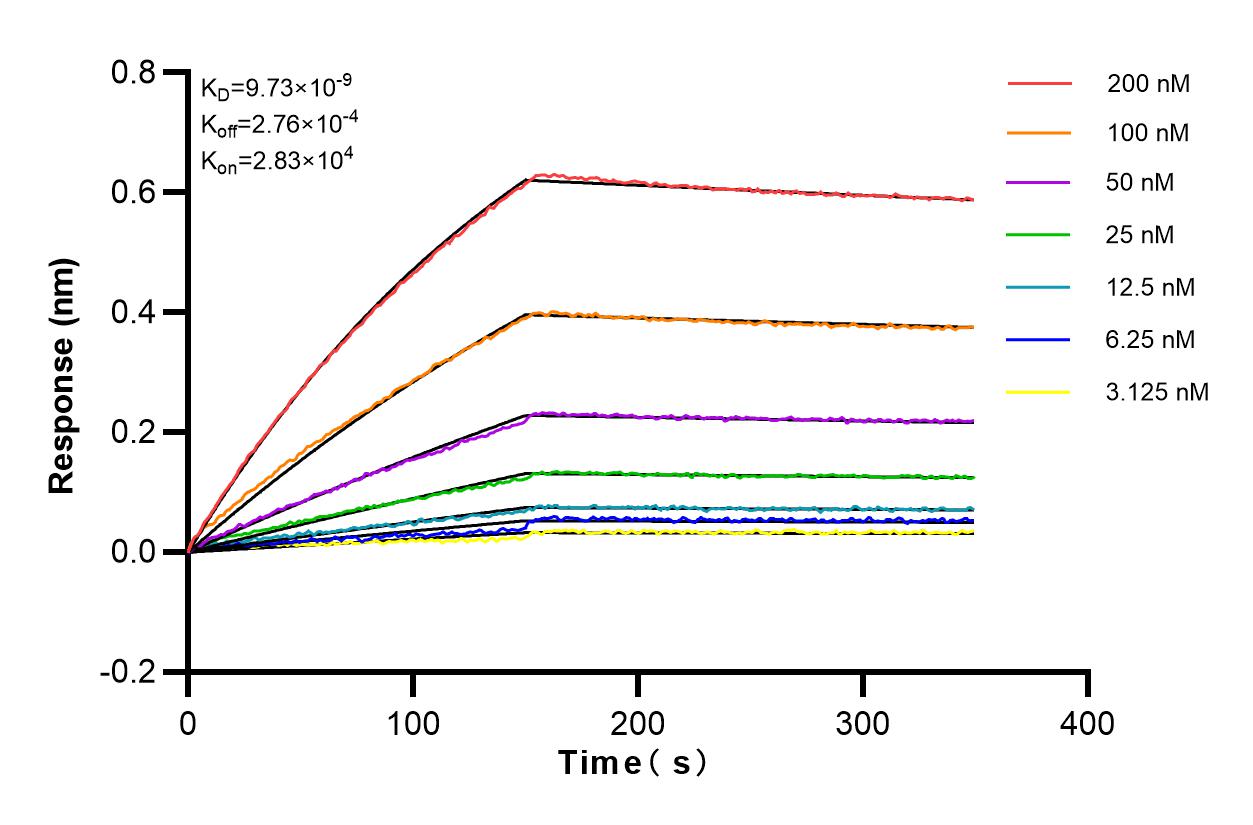Anticorps Recombinant de lapin anti-STT3A
STT3A Recombinant Antibody for ELISA
Hôte / Isotype
Lapin / IgG
Réactivité testée
Humain
Applications
ELISA
Conjugaison
Non conjugué
CloneNo.
230426B10
N° de cat : 83077-4-RR
Synonymes
Galerie de données de validation
Informations sur le produit
83077-4-RR cible STT3A dans les applications de ELISA et montre une réactivité avec des échantillons Humain
| Réactivité | Humain |
| Hôte / Isotype | Lapin / IgG |
| Clonalité | Recombinant |
| Type | Anticorps |
| Immunogène | STT3A Protéine recombinante Ag31994 |
| Nom complet | STT3, subunit of the oligosaccharyltransferase complex, homolog A (S. cerevisiae) |
| Masse moléculaire calculée | 705 aa, 81 kDa |
| Numéro d’acquisition GenBank | BC020965 |
| Symbole du gène | STT3A |
| Identification du gène (NCBI) | 3703 |
| Conjugaison | Non conjugué |
| Forme | Liquide |
| Méthode de purification | Protein A purfication |
| Tampon de stockage | PBS with 0.02% sodium azide and 50% glycerol |
| Conditions de stockage | Stocker à -20°C. Stable pendant un an après l'expédition. L'aliquotage n'est pas nécessaire pour le stockage à -20oC Les 20ul contiennent 0,1% de BSA. |
Informations générales
STT3A, also named as Dolichyl-diphosphooligosaccharide--protein glycosyltransferase subunit STT3A, is a 705 amino acid prtein, which belongs to the STT3 family. STT3A is expressed at high levels in placenta, liver, muscle and pancreas, and at very low levels in brain, lung and kidney. STT3A is a catalytic subunit of the N-oligosaccharyl transferase (OST) complex which catalyzes the transfer of a high mannose oligosaccharide from a lipid-linked oligosaccharide donor to an asparagine residue within an Asn-X-Ser/Thr consensus motif in nascent polypeptide chains. N-glycosylation occurs cotranslationally and the complex associates with the Sec61 complex at the channel-forming translocon complex that mediates protein translocation across the endoplasmic reticulum (ER). SST3A seems to be involved in complex substrate specificity. STT3A is present in the majority of OST complexes and mediates cotranslational N-glycosylation of most sites on target proteins, while STT3B-containing complexes are required for efficient post-translational glycosylation and mediate glycosylation of sites that have been skipped by STT3A.



